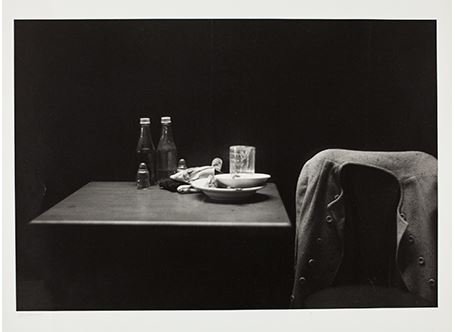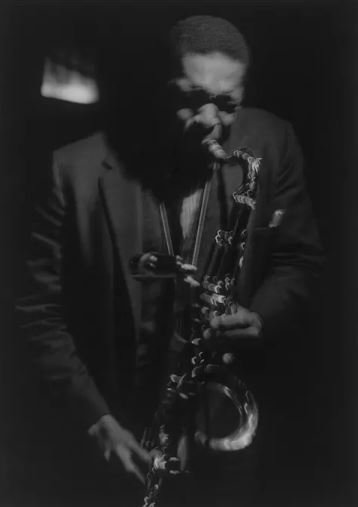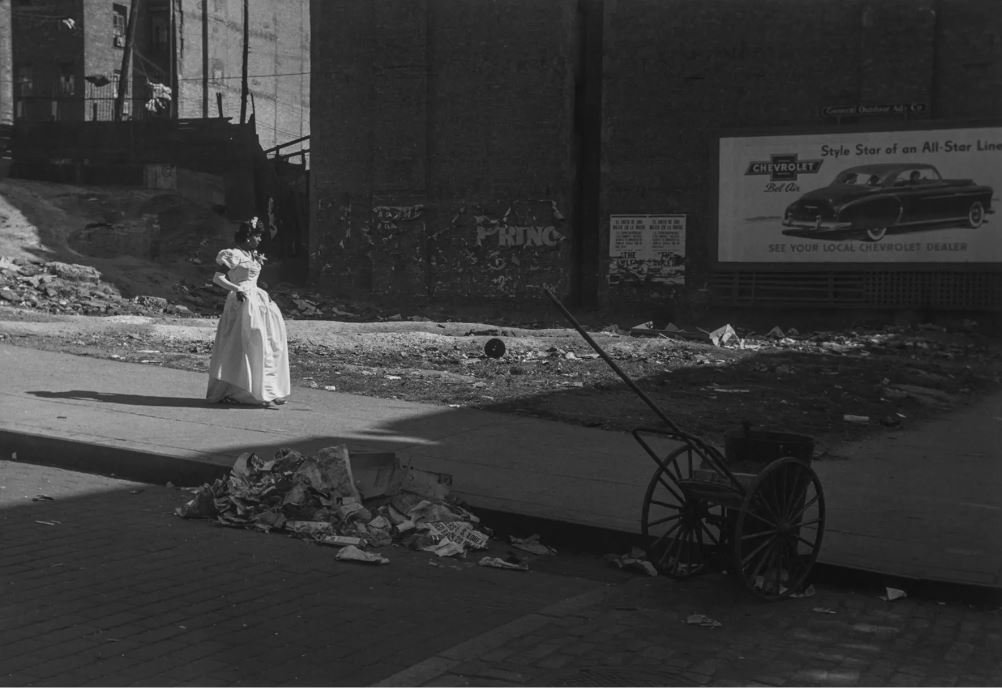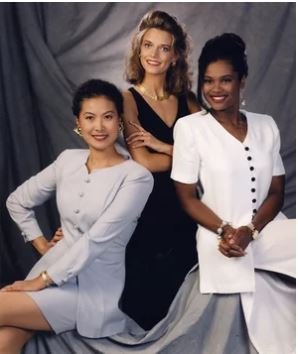Episode 25: Shades of Gray
“I want to photograph Harlem through the Negro people. Morning, noon, night, at work, going to work, coming home from work, at play, in the streets, talking, kidding, laughing, in the home, in the playgrounds, in the schools, bars, stores, libraries, beauty parlors, churches, etc.” -Roy DeCarava quoted in Roy DeCarava: a retrospective, Museum of Modern Art, 1996
In this episode, I talk about one of my favorite photographs by Roy DeCarava, shown below.
Roy DeCarava, Dancers, 1956, Sold at Sotheby’s, 21 April 2021 for $40,320
When I started researching this print, I noticed that other prints were not made nearly as dark as the one we were selling. For instance, a print from the same negative is at the Art Institute of Chicago, but a lot more detail is visible:
Roy DeCarava, Dancers, 1956, Collection of the Art Institute of Chicago
This got me thinking about the choices we make as photographers, and why we make those choices. Just as I started contemplating this question, by coincidence I was introduced to Saul Robbins, who was a teaching assistant for DeCarava at Hunter College.
Saul is a photographer himself, and has a lot of great insight about what it was like working with DeCarava and the influence he had on his own work and teaching style. Robbins’ work has been exhibited and published internationally, most recently Harvard Business Review and Der Spiegel. He holds an MFA from Hunter College (City University of New York) and is Adjunct Professor of Photography at The International Center for Photography, New York Film Academy, and The School of Visual Arts. Robbins also consults privately and leads Master Workshops about communication strategies and professional development.
Roy DeCarava, Self Portrait, Reflection (1949)
Roy DeCarava was born in 1919 in Harlem right before the explosion of arts and culture of the Harlem Renaissance. He enrolled at Cooper Union, but, after two years of hostility from white students, he left and enrolled instead at the Harlem Community Art Center to study painting.
Edward Steichen, then curator of the Museum of Modern Art, attended DeCarava’s first solo show at the Forty-Fourth Street Gallery in 1950 and bought several prints for the museum’s collection. He was awarded a Guggenheim Fellowship in 1952, the first African American photographer to receive the grant. Many of the photos enabled by this $3,200 award were compiled in the book The Sweet Flypaper of Life (1955; reissued 1988), with text written by Langston Hughes.
DeCarava’s interest in education led him to found A Photographer’s Gallery (1955–57) and a workshop for African American photographers in 1963. Many of DeCarava’s jazz portraits were published in The Sound I Saw: Improvisation on a Jazz Theme (2001).
His first solo museum exhibition, ‘Harlem on My Mind’ was at the Metropolitan Museum of Art in 1969. In 1996 the Museum of Modern Art organized a DeCarava retrospective that traveled to several cities and introduced his work to a new generation. DeCarava received a National Medal of Arts in 2006.
Roy DeCarava died in 2009 at the age of 89.
The Shirley Card, first used by Kodak, is a fascinating facet of photographic history. The podcast 99% Invisible has done a fascinating in-depth episode on these cards and the evolution of film through the years.
Shirley cards through the years, notably with the word “NORMAL” by each model’s face.
1966 Shirley Card
1996 Shirley Card














